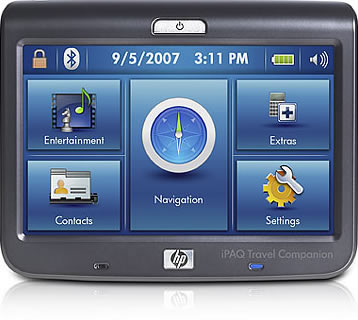
Unlike with some competing GPS products, you won’t be stuck with out-of-date maps and points of interest. Connect the 310 to your PC via a supplied USB cable to update the on-board data via the Internet. You can use the touch screen to explore areas outside your field of view. Use the side-mounted dial to incrementally change from a close-up 3D perspective to a bird-eye 2D perspective. Currently, 40 cities have low-resolution 3D buildings that look very cool as you drive by them. Otherwise, the streets are limited to a ground-level 3D perspective that’s still effective for providing a sense of scale and direction.
Other features include an SDHC-compatible SD-card slot for playing video and audio files, several games, and Bluetooth for using the 310 as a hands-free answering system for your cell phone. The 800×480 resolution screen is great for video, though it’s fairly picky about which types of AVI files it can play. Even with the fast processor, it became bogged down with video saved at a high bit rate. Those limitations aren’t a deal breaker, mostly because the media player is an add-on, not the main attraction. It’s the GPS capabilities that make the 310 really shine.